Are generative artificial intelligence (AI) tools, such as OpenAI’s ChatGPT and Google Bard, coming after tech jobs, particularly coders, computer programmers, software engineers and data analysts? The answer is…yes and no.
These tools are becoming increasingly sophisticated and capable of automating many of the tasks that are currently performed by human tech workers. For example, ChatGPT can now generate code, write different kinds of creative content, and answer questions in an informative way. This means that it is possible for these tools to replace human workers in a variety of roles, such as:
- Coding: Generative AI tools can now write code that is just as good as, or even better than, code written by humans. These tools can be used to automate the tasks of software engineers and other tech workers who write code.
- Data analysis: Generative AI tools can now analyze data and identify patterns that would be difficult or time-consuming for humans to find. They can be used to automate the tasks of data analysts and other tech workers who analyze data.
- Customer service: Generative AI tools can now communicate with customers in a natural and engaging way. They can be used to automate the tasks of customer service representatives and other tech workers who interact with customers.
But, generative AI tools are not perfect. They can still make mistakes, and they may not always be able to understand the nuances of human language. However, as these tools continue to develop, they are likely to become more sophisticated and capable of automating even more tasks. This could lead to significant job losses in the tech industry, particularly in the areas of coding, data analysis, and customer service.
Generative AI Tools Create New Job Opportunities
It is important to remember that generative AI tools are also creating new jobs. For example, there will be a need for people to develop and maintain these tools, as well as to train and support the people who use them. Additionally, generative AI tools are enabling new businesses and applications to be created, which will create new jobs in other sectors.
Overall, the impact of generative AI tools on the tech job market is likely to be mixed. Some jobs will be lost, but new jobs will also be created. The key for tech workers is to be prepared for the changes that are coming and to develop the skills that will be in demand in the future. This includes skills in generative AI, as well as in other areas such as cloud computing, cybersecurity, and data science.
Generative AI is driving innovation and creating new job opportunities within the tech sector. Here are some specific use cases and businesses where generative AI is contributing to job creation:
- AI-Driven Software Development: GitHub Copilot (by GitHub): GitHub Copilot uses generative AI to assist developers in writing code, resulting in increased demand for developers who can collaborate effectively with AI tools to create software.
- Graphics and Design: Adobe Sensei (by Adobe): Adobe’s AI platform, Sensei, leverages generative AI for tasks like image manipulation and design, leading to roles for graphic designers, UI/UX designers, and AI engineers.
- Natural Language Processing (NLP): OpenAI’s GPT Models: Companies integrating GPT-3 or similar models into customer support systems or chatbots require AI engineers, NLP experts, and data scientists to fine-tune and deploy these models effectively.
- AI-Generated Content Platforms: Artbreeder: Platforms like Artbreeder, which allow users to generate art and images using AI, create positions for software engineers, UI/UX designers, and AI artists.
- Video Game Development: Unity’s AI Tools: Unity’s AI tools, which include AI-driven character animations and game behavior, contribute to job openings for game developers, AI programmers, and technical artists.
- Cybersecurity: Darktrace: Darktrace employs generative AI to detect and respond to cyber threats, leading to roles for cybersecurity analysts, AI engineers, and threat hunters.
- Data Analysis and Prediction: Domino Data Lab: Data science platforms like Domino Data Lab that incorporate generative AI for predictive analytics create opportunities for data scientists, machine learning engineers, and AI analysts.
- Virtual Assistants and Smart Devices: Amazon Alexa Skills Development: As developers build skills for virtual assistants like Alexa, they generate job opportunities for voice user interface (VUI) designers, AI developers, and conversational designers.
- Robotics and Automation: Boston Dynamics: Robotics companies utilizing generative AI for motion planning and task optimization require roboticists, AI researchers, and control systems engineers.
- Autonomous Vehicles: Waymo (Alphabet Inc.): Waymo’s self-driving technology relies on generative AI for decision-making in complex driving scenarios, leading to job openings for AI engineers, computer vision specialists, and autonomous vehicle testers.
- Healthcare Technology: PathAI: Companies like PathAI that use generative AI for medical image analysis and diagnostics create roles for medical AI researchers, radiologists, and AI implementation specialists.
- Biotechnology: Insilico Medicine: Biotech firms leveraging generative AI for drug discovery and molecular modeling generate opportunities for computational biologists, AI researchers, and drug development experts.
Generative AI’s integration into the tech sector is fostering innovation and enabling businesses to tackle complex challenges. As these technologies continue to evolve, they will likely lead to the emergence of new roles and skill sets across various domains within the tech industry.
Case Studies of Businesses Benefiting from AI Tools
Several businesses are using generative AI to their advantage. Here are a few well-known enterprises putting AI to work for them:
Adobe: Adobe is using generative AI to create new assets for its products, such as Photoshop and Illustrator. Adobe’s Sensei technology (see related item above) can automatically create new brushes and textures for Photoshop, and its Project Runway-inspired AI can generate new fashion designs.
Google: Google is using generative AI to improve its search results, translate languages, and generate text. Google’s BERT model can improve the accuracy of search results by understanding the context of words and phrases. Google’s Translate model can translate languages more accurately than ever before, and Google’s Text-To-Code tool can generate code from natural language descriptions.
Duolingo: Duolingo is using generative AI to help its users learn languages. Duolingo’s AI-powered chatbots can provide personalized feedback and instruction, and its AI-powered translation tools can help users understand and communicate in new languages.
Shopify: Shopify is using generative AI to create personalized product recommendations for its merchants. Shopify’s AI can analyze customer data to identify products that are likely to be of interest to each customer, and it can then generate personalized recommendations for those products.
Walmart: Walmart is using generative AI to optimize its supply chain. Walmart’s AI can predict demand for products, identify opportunities for savings, and optimize the routing of shipments.
As generative AI continues to develop, expect to see even more businesses adopting this technology to improve their operations and create new products and services. In any case, humans with business acumen and insights – even if just a gut feeling – are needed to help enterprises move forward, innovate, grow, and prosper.










